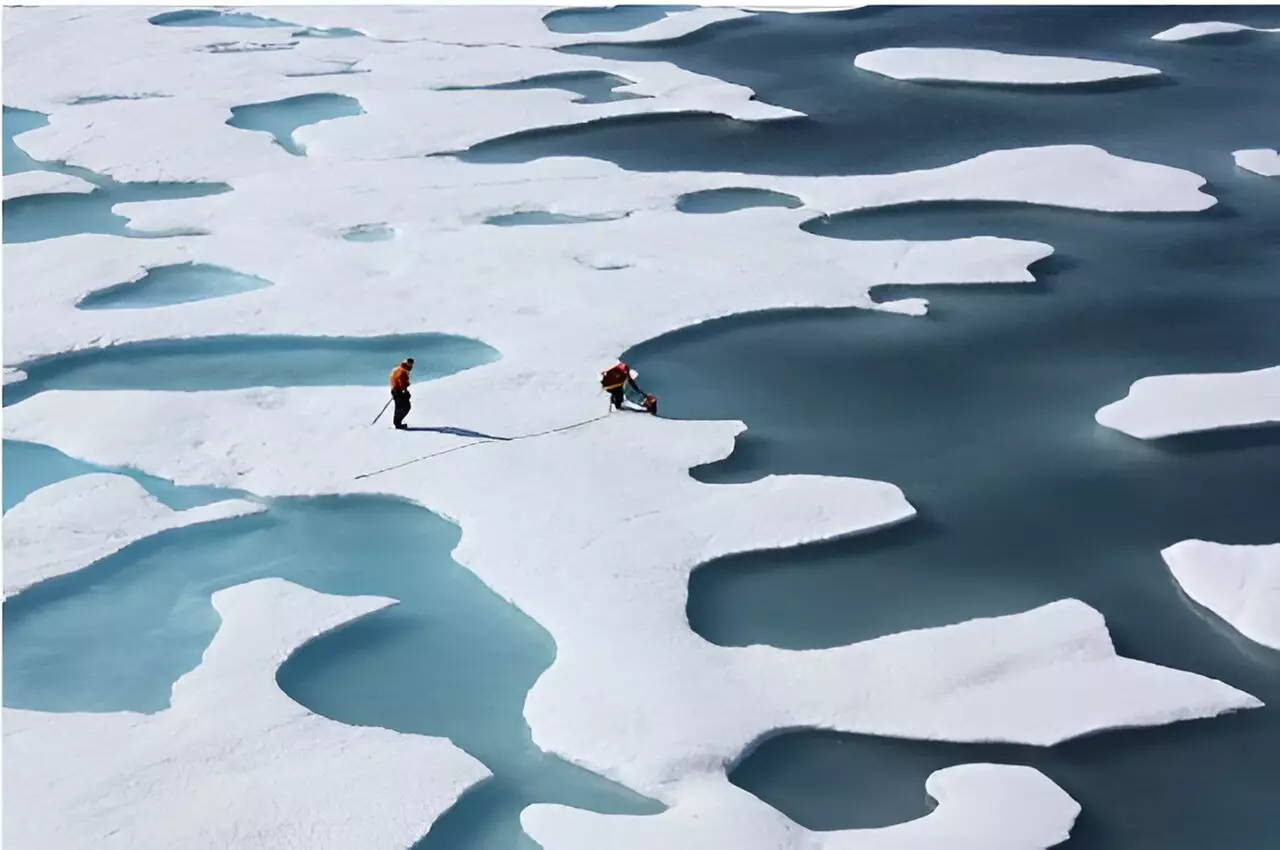Recent studies led by scientists from the University of Michigan have unveiled a concerning trajectory concerning the Earth’s protective reflective barrier: sea ice. Since 1980, the Arctic has lost an astonishing 25% of its cooling power, while the global scene has plummeted by nearly 15%. These findings arise from a systematic analysis of satellite data, focusing on cloud cover and the solar radiation reflected by sea ice, shedding light on an intricate aspect of climate change that has often gone unnoticed.
The impact of this reflective loss is far-reaching. Traditionally, sea ice has played an integral role in regulating temperatures by reflecting sunlight back into space. However, as the ice diminishes and evolves into forms that are denser and wetter, the ice’s ability to reflect solar radiation diminishes alarmingly. This creates a vicious cycle: as the warming accelerates, more comprehensive melting occurs, leading to even less reflective ice. It’s an alarming trend that raises immediate questions about the future viability of climate systems worldwide.
Inconsistent Changes: Arctic vs. Antarctic
While the Arctic is experiencing the most significant drop in cooling power, the Antarctic globe has presented a more stable façade until recent years. Historically, the Antarctic’s ice cover remained robust between 2007 and the mid-2010s, even exhibiting slight enhancements in cooling capacity during that span. This perception was shaken in 2016 when a significant portion of ice, larger than the state of Texas, melted from one of its principal ice shelves. Following that chaotic year, Antarctic sea ice cooling power has been on a steady decline, marking the most significant reduction in global cooling since the early 1980s.
The discrepancies between the two polar regions underscore a troubling reality in climate science — there is no uniform pattern in how climate change affects the two. While the Arctic has been a glaring indicator of climate instability, the recent shifts in the Antarctic suggest that regions previously considered resilient are now also at risk. The implications of these interconnected systems cannot be overstated; as one polar area falters, it may influence the other, indicating a more comprehensive crisis in the cryosphere.
Underestimating the Impact of Warming Feedback
A crucial finding from the research revolves around the underestimated impact of warming feedback due to changes in sea ice. The study indicates that the changes in the Antarctic since 2016 could increase the warming feedback from the loss of sea ice by up to 40%. This insight risks deepening the crisis if not fully analyzed and integrated into policy-making and climate adaptation strategies. As scientists like Alisher Duspayev note, failure to account for the altered radiative effects in the Antarctic may render global energy absorption calculations severely inaccurate.
Such revelations underscore the immediate necessity for recalibrating models that predict the effects of climate change. While the predominant focus has been on the reduction of physical ice cover, the associated variations in reflectivity necessitate urgent attention. The climate science community must embrace these insights and develop adaptive measures that accurately reflect the complexities of our warming climate.
Bridging Knowledge Gaps Through Public Awareness
The research team’s commitment to disseminating these findings through an accessible online platform indicates a forward-thinking approach to fostering public awareness and scientific discourse. By continually updating the scientific community with new satellite data on sea ice, they not only aim to keep the dialogue alive but also to reinforce the notion that climate change effects are dynamically evolving.
The integration of fresh insights and figures into climate adaptation plans calls for collaboration among scientists, policymakers, and the public. The data provided can inform decision-making processes and create a concrete framework for addressing the multifaceted challenges posed by the loss of sea ice. Only through collective understanding and action can we hope to address the repercussions of our climate’s increasing instability.
Addressing climate change isn’t merely an environmental issue; it impacts every socio-economic layer of life on Earth. Society must prioritize adaptation strategies that account for the nuances highlighted by these recent studies, lest we face more severe ramifications down the line. As we stand on the precipice of irreversible changes, it is imperative that these findings serve as a catalyst for urgent and informed action.


Leave a Reply